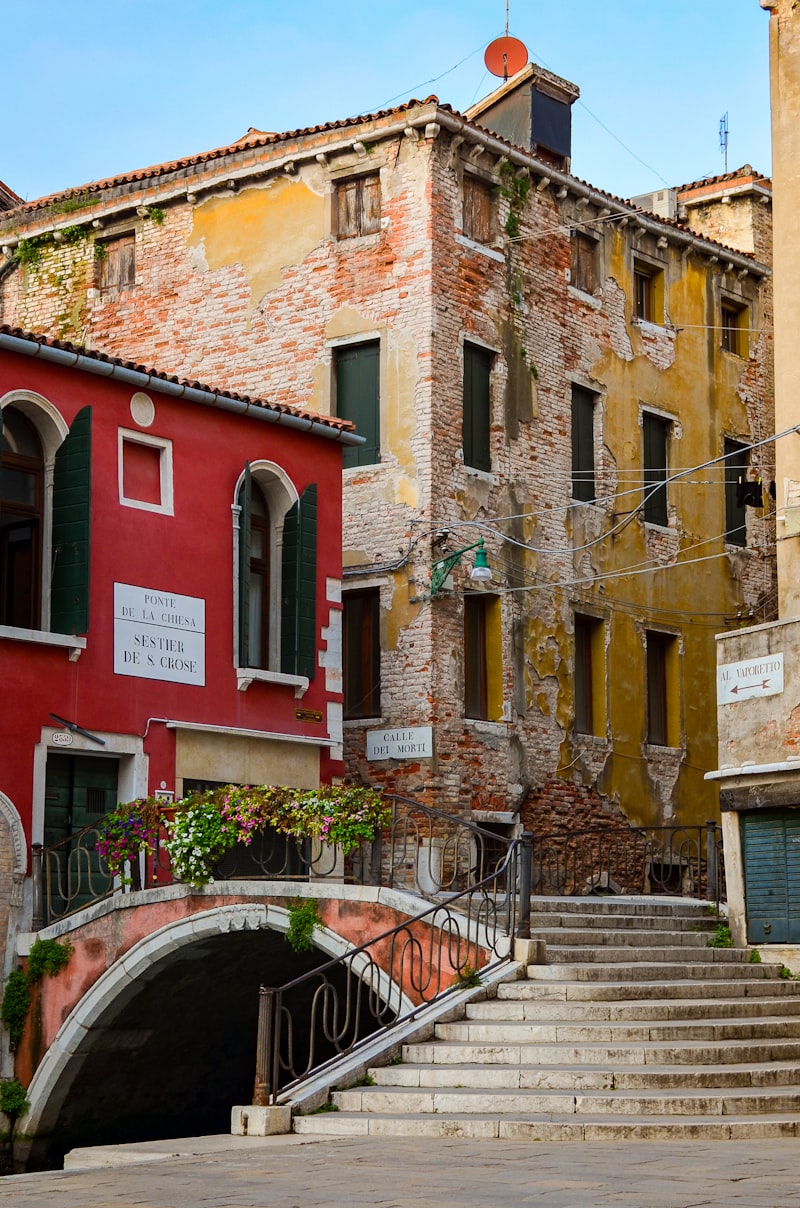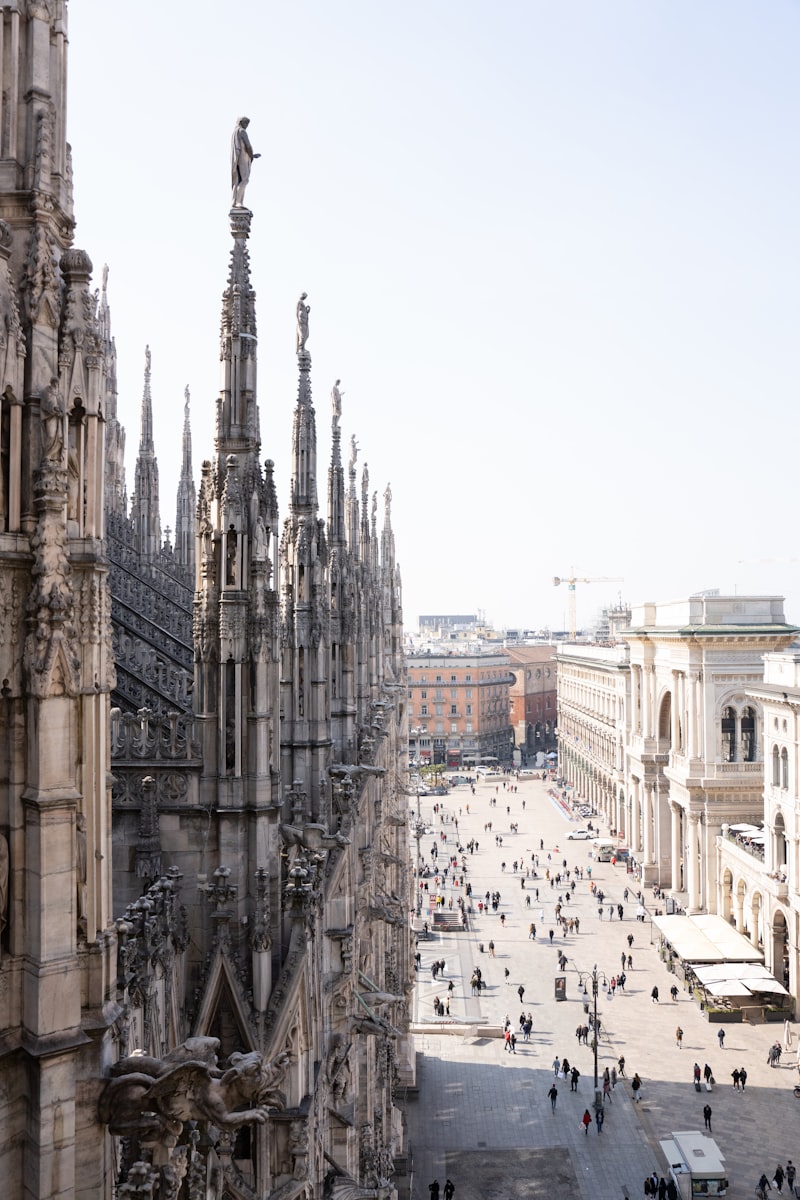Take Barcelona, where the whimsical designs of Antoni Gaudí defy convention with structures like the Sagrada Família, a basilica that blends Gothic and Art Nouveau styles into a masterpiece of form and function. Wander through Rome, where ancient ruins like the Colosseum and the Pantheon stand as testaments to the city’s former glory as the heart of the Roman Empire.
In Amsterdam, the slender canal houses lean towards each other as if whispering secrets from centuries past, while in Venice, palaces rise majestically from the waters, reflecting the city’s unique marriage of opulence and maritime necessity. Meanwhile, in Budapest, the Hungarian Parliament Building commands attention with its Gothic Revival architecture, symbolizing the country’s tumultuous history and enduring spirit.
Throughout Europe, from the bustling streets of London to the romantic alleys of Florence, architecture serves not only as a backdrop but as a living testament to the cultural, political, and social currents that have shaped each city. It invites visitors to delve deeper into their stories, to ponder the artisans and architects who left their indelible mark on these landscapes.

Whether you find yourself captivated by the sleek modernism of Scandinavian cities or the baroque extravagance of Vienna, Europe’s cities promise an architectural journey unlike any other. Each façade, arch, and cobblestone street offers a window into a world where past and present intertwine, inviting all who wander to uncover the secrets held within their walls.
Architectural Marvels: Unveiling Europe’s Hidden Urban Gems
One such hidden gem is Ghent, nestled in Belgium. This picturesque city is a seamless blend of medieval and modern architecture, where towering Gothic spires coexist with contemporary structures. Imagine strolling through the cobbled streets of Graslei and Korenlei, flanked by majestic guildhalls that once housed prosperous merchants. Each facade tells a story, making Ghent a haven for history enthusiasts and architecture aficionados alike.
Moving eastward, the Polish city of Wroclaw awaits, renowned for its enchanting Market Square. Here, the whimsical architecture of the Town Hall stands as a testament to Gothic, Renaissance, and Baroque influences. The intricate detailing on the facade is a testament to the craftsmanship of centuries past, inviting visitors to marvel at its beauty and wonder about the hands that shaped it.
Continuing southward, the city of Porto in Portugal beckons with its iconic Ribeira district. This waterfront area, a UNESCO World Heritage site, boasts colorful buildings adorned with traditional Portuguese azulejos. Each tile tells a story, painting a vivid picture of the city’s maritime history and cultural richness.
Not to be overlooked is Ljubljana, the capital of Slovenia, where architectural styles from Roman times to the present day converge harmoniously. The Ljubljana Castle, perched atop a hill overlooking the city, offers panoramic views and a glimpse into the city’s medieval past. As you wander through its charming streets and bridges, you’ll find a blend of Art Nouveau elegance and socialist-era architecture that tells the story of Slovenia’s journey through time.
A Journey Through Time: Europe’s Most Iconic Architectural Wonders
Imagine standing before the majestic Colosseum in Rome, a testament to the grandeur of ancient Roman engineering. Built over 2,000 years ago, this amphitheater once hosted gladiatorial contests and grand spectacles, symbolizing the power and influence of the Roman Empire. Its towering arches and intricate facade continue to inspire awe and admiration.
Moving north to Paris, the Eiffel Tower stands as a timeless symbol of innovation and artistic vision. Designed by Gustave Eiffel for the 1889 World’s Fair, this iron lattice tower was initially criticized but has since become an enduring icon of French creativity. Its panoramic views of the City of Light draw millions of visitors each year, marveling at its grace and structural ingenuity.
Venture further east to Istanbul, where the Hagia Sophia reigns as a masterpiece of Byzantine architecture. Originally built as a Christian cathedral in the 6th century, it later became a mosque and now serves as a museum. The Hagia Sophia’s massive dome and intricate mosaics reflect centuries of cultural and religious evolution, embodying the rich heritage of this vibrant city.
In Barcelona, the Sagrada Familia represents a fusion of art and faith envisioned by the renowned architect Antoni Gaudí. Construction began in 1882 and continues to this day, guided by Gaudí’s innovative vision of nature-inspired design. Its towering spires and surrealistic forms make it a beacon of Catalan identity and a testament to the enduring power of architectural innovation.
From the medieval splendor of Prague Castle to the futuristic skyline of London’s Shard, Europe’s architectural wonders span centuries and styles, each telling a unique story of craftsmanship, culture, and human endeavor. Whether you’re drawn to the ancient ruins of Athens or the sleek lines of Frankfurt’s modern skyscrapers, Europe offers a kaleidoscope of architectural wonders waiting to be explored and admired.
The Secrets Behind Europe’s Diverse Cityscapes
Imagine strolling through the cobbled streets of Paris, where every turn unveils a blend of Gothic cathedrals and Haussmannian boulevards. It’s a city where the Eiffel Tower stands tall as a symbol of architectural prowess, while Montmartre whispers tales of artists and bohemian life. Paris isn’t just a city; it’s an experience woven from centuries of art, revolution, and refinement.
On the other hand, Venice floats like a mirage in the Adriatic Sea, its canals reflecting the grandeur of Byzantine and Renaissance architecture. Navigating through its waterways feels like stepping into a painting by Canaletto, where palazzos and basilicas rise majestically from the water’s edge. Venice isn’t just a city; it’s a masterpiece crafted by human hands amidst nature’s whims.
Then there’s Barcelona, where Gaudí’s whimsical creations like the Sagrada Família and Park Güell dot the skyline like surreal dreams brought to life. The Catalan capital pulsates with a vibrant energy, blending medieval Gothic quarters with the avant-garde designs of the modernist movement. Barcelona isn’t just a city; it’s a fusion of creativity and tradition, where every street corner invites exploration and wonder.
And what about Berlin, a city that wears its scars and triumphs on its sleeve? From the Brandenburg Gate to the remnants of the Berlin Wall, it’s a testament to resilience and reinvention. Berlin’s eclectic mix of Prussian palaces, communist-era relics, and contemporary art hubs like the East Side Gallery paint a portrait of a city constantly evolving yet rooted in its tumultuous past.
Europe’s cityscapes aren’t just about buildings and streets; they’re about the people who shaped them and the stories they hold. Each city is a living testament to history’s tapestry, where every facade, square, and alleyway whispers secrets of bygone eras and future aspirations. Whether you’re captivated by the grandeur of Rome’s ancient ruins or the futuristic skyline of Rotterdam, Europe’s cities promise to enthrall, inspire, and leave you in awe of their diversity and enduring allure.
European Elegance: Discovering the Architectural Charms of Old World Cities
Imagine strolling through cobblestone streets where every corner whispers tales of history and grandeur. Old world cities in Europe epitomize architectural elegance like no other. From the towering spires of Gothic cathedrals to the intricate facades of Renaissance palaces, each city tells a unique story through its architecture.
One cannot help but marvel at the Gothic masterpieces scattered across Europe. Picture the Notre Dame Cathedral in Paris, with its majestic rose windows and flying buttresses that seem to defy gravity. Or the Cologne Cathedral in Germany, a stunning example of Gothic architecture that took over six centuries to complete. These structures not only inspire awe but also stand as testaments to the craftsmanship of medieval artisans.
Moving forward in time, the Renaissance brought a wave of innovation and beauty to European cities. Florence, the birthplace of the Renaissance, boasts architectural wonders such as the Florence Cathedral and the Palazzo Vecchio. The harmony of proportion and the revival of classical forms characterize these buildings, reflecting a period of cultural rebirth and artistic flourish.
Venturing into the Baroque era, cities like Vienna and Prague showcase opulent palaces and churches adorned with elaborate stucco work and frescoes. The Schönbrunn Palace in Vienna, with its sprawling gardens and lavish interiors, exemplifies the grandeur of Baroque architecture. Similarly, the St. Nicholas Church in Prague captivates with its ornate dome and intricate decorations, inviting visitors to marvel at its splendor.
Beyond the architectural styles, each city offers a glimpse into its unique cultural heritage. Whether it’s the romantic canals of Venice, the medieval charm of Bruges, or the imperial grandeur of St. Petersburg, every old world city has its own identity shaped by centuries of history and tradition.
From Gothic Splendor to Modern Chic: Europe’s Architectural Evolution
The journey begins amidst the soaring arches and stained glass of Gothic architecture, which flourished during the Middle Ages. Structures like Notre Dame Cathedral in Paris and Cologne Cathedral in Germany stand as enduring symbols of this period, characterized by pointed arches, ribbed vaults, and flying buttresses. Gothic architecture aimed to elevate the soul through its awe-inspiring verticality and intricate detailing, reflecting the spiritual aspirations of the time.
As Europe transitioned into the Renaissance, a revival of classical Roman and Greek forms swept across the continent. Architects embraced principles of proportion, symmetry, and harmony, seen in landmarks such as Florence’s Cathedral Dome and St. Peter’s Basilica in Vatican City. The Renaissance marked a return to humanism and a celebration of human achievement, with architecture becoming a canvas for artistic expression and intellectual ideals.
Fast forward to the Baroque and Rococo periods, where architecture became synonymous with grandeur and theatricality. Palaces like Versailles in France and Schönbrunn Palace in Austria exemplify this opulent style, characterized by elaborate ornamentation, sweeping curves, and a sense of movement. Baroque and Rococo architecture aimed to impress and overwhelm, serving as symbols of monarchic power and divine authority.
The 19th and 20th centuries witnessed a dramatic shift towards industrialization and modernism. Europe’s cities embraced steel, glass, and concrete, ushering in an era of functionalism and minimalist design. The Eiffel Tower in Paris and the Bauhaus movement in Germany epitomize this shift, with architects prioritizing efficiency, simplicity, and the integration of technology into design.
Today, Europe’s architectural landscape continues to evolve, blending heritage with contemporary innovation. Cities like London, Barcelona, and Berlin showcase a diverse array of styles, from adaptive reuse of historic buildings to groundbreaking sustainable architecture. The challenge lies in balancing preservation with progress, honoring the past while embracing the future.
Europe’s architectural evolution is a testament to humanity’s ability to shape and reshape its environment, reflecting cultural values, technological advancements, and societal aspirations. Each building tells a story, inviting us to ponder the past, engage with the present, and envision the possibilities of tomorrow.
Hidden Treasures: Unearthing Unique Architectural Styles Across Europe
Europe, a continent steeped in history and culture, holds a myriad of architectural gems waiting to be discovered. From the grandeur of Gothic cathedrals to the whimsical charm of Art Nouveau houses, each structure tells a tale of its own. Imagine wandering through the cobbled streets of Prague, where every corner reveals a new marvel of medieval architecture. The towering spires of St. Vitus Cathedral pierce the sky, showcasing intricate stone carvings that have withstood centuries.

Venture south to Barcelona, where the genius of Antoni Gaudí comes to life in buildings like the Sagrada Família. Its unconventional design and organic forms challenge traditional perceptions of architecture, inviting visitors to ponder its symbolism and marvel at its sheer audacity.
Crossing into Italy, the city of Venice enchants with its Byzantine and Gothic influences. The intricate lacework of the Doge’s Palace contrasts with the graceful arches of the Rialto Bridge, creating a timeless allure that has captivated artists and architects for ages.
Further east lies Budapest, where the thermal baths are not the only attraction. The Hungarian Parliament Building, a masterpiece of Gothic Revival architecture, stands proudly along the Danube River, its imposing facade adorned with spires and statues that reflect the nation’s rich history.
In each of these cities, hidden treasures abound, waiting to be unearthed by those who appreciate the beauty of unique architectural styles. Whether exploring the fairy-tale castles of Germany, the minimalist elegance of Scandinavian design, or the avant-garde structures of modern Europe, every corner reveals a new chapter in the continent’s architectural saga.
Frequently Asked Questions
What are some iconic architectural styles found in European cities?
Explore iconic architectural styles across European cities, from Gothic cathedrals to Baroque palaces and Neoclassical buildings. Discover how each style reflects historical periods and cultural influences, shaping the unique urban landscapes of Europe.
How does historical heritage influence architecture in Europe’s urban centers?
Discover how historical heritage shapes the architecture of Europe’s urban centers, influencing design principles, building styles, and urban planning strategies through preservation and adaptation of iconic historical structures.
What are the key features of Gothic architecture seen across Europe?
Explore the defining characteristics of Gothic architecture across Europe, known for its pointed arches, ribbed vaults, and flying buttresses. This style emphasizes height and light, using stained glass windows and elaborate decoration to create awe-inspiring religious structures.
Which European cities are known for their modern architectural landmarks?
Discover European cities renowned for their modern architectural landmarks. Explore iconic structures and innovative urban designs across cities like Barcelona, Rotterdam, and Oslo, known for pushing the boundaries of contemporary architecture.
How can tourists best explore the architectural diversity of European cities?
Discovering the architectural diversity of European cities as a tourist is best achieved through guided walking tours that highlight iconic landmarks and lesser-known gems. These tours provide historical context and architectural insights, allowing visitors to appreciate the unique styles and influences that shape each cityscape.



